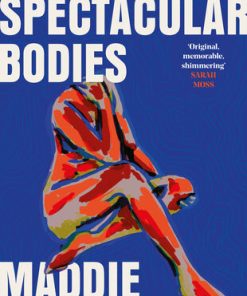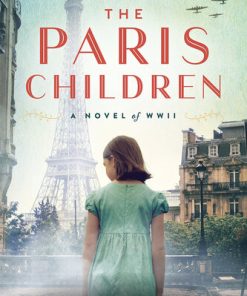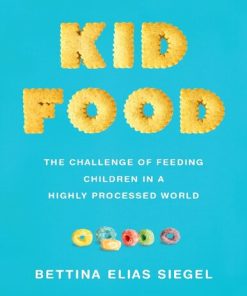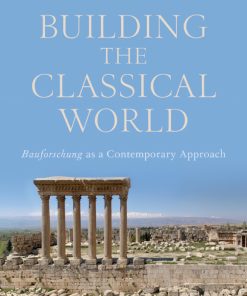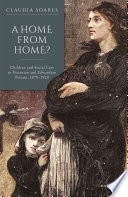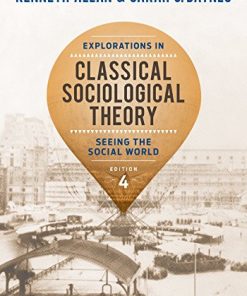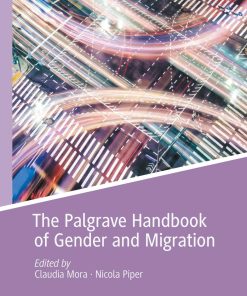Topologies of the Classical World in Children’s Fiction Palimpsests Maps and Fractals 1st edition by Claudia Nelson, Anne Morey 0192584901 9780192584908
$50.00 Original price was: $50.00.$25.00Current price is: $25.00.
Topologies of the Classical World in Children’s Fiction: Palimpsests, Maps, and Fractals 1st edition by Claudia Nelson, Anne Morey – Ebook PDF Instant Download/DeliveryISBN: 0192584901, 9780192584908
Full download Topologies of the Classical World in Children’s Fiction: Palimpsests, Maps, and Fractals 1st edition after payment.
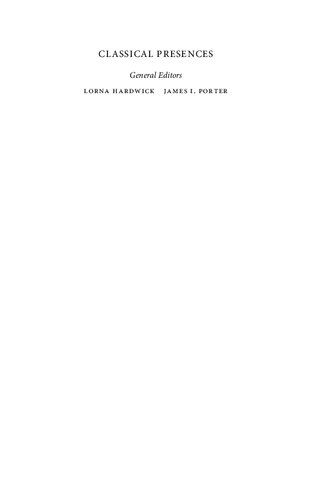
Product details:
ISBN-10 : 0192584901
ISBN-13 : 9780192584908
Author : Claudia Nelson, Anne Morey
Beginning with Rudyard Kipling and Edith Nesbit and concluding with best-selling series still ongoing at the time of writing, this volume examines works of twentieth- and twenty-first-century children’s literature that incorporate character types, settings, and narratives derived from the Greco-Roman past. Drawing on a cognitive poetics approach to reception studies, it argues that authors typically employ a limited and powerful set of spatial metaphors – palimpsest, map, and fractal – to organize the classical past for preteen and adolescent readers. Palimpsest texts see the past as a collection of strata in which each new era forms a layer superimposed upon a foundation laid earlier; map texts use the metaphor of the mappable journey to represent a protagonist’s process of maturing while gaining knowledge of the self and/or the world; fractal texts, in which small parts of the narrative are thematically identical to the whole, present the past in a way that implies that history is infinitely repeatable. While a given text may embrace multiple metaphors in presenting the past, associations between dominant metaphors, genre, and outlook emerge from the case studies examined in each chapter, revealing remarkable thematic continuities in how the past is represented and how agency is attributed to protagonists: each model, it is suggested, uses the classical past to urge and thus perhaps to develop a particular approach to life.
Topologies of the Classical World in Children’s Fiction: Palimpsests, Maps, and Fractals 1st Table of contents:
1. Introduction
1.1 The Models
1.2 Sample Exception #1: Mirroring in Echo Echo
1.3 Sample Exception #2: Insides and Outsides in Bull
1.4 Sample Exception #3: Curves vs. Straight Lines in The Mark of the Horse Lord
1.5 Conclusion
2. History is a Palimpsest 1: The Layers of Ancient Rome in Puck of Pook’s Hill and Its Successors
2.1 Foundations: Puck of Pook’s Hill
2.2 Layers for Adults: Three Fantasies
2.3 Layers for Children: Three Fantasies
2.4 Beyond Fantasy: Philip Turner’s Yorkshire Palimpsest
2.5 Conclusion
3. History is a Palimpsest 2: Time Zones, Scars, and Family in (Mostly) Realistic Works
3.1 Magical Rules and Classical Tradition in The Enchanted Castle
3.2 Liminality and Mixed Metaphors in Three Novels by Caroline Dale Snedeker
3.3 Trauma, Family, and History in The Bronze Bow
3.4 Wounding in The Eagle of the Ninth
3.5 Conclusion
4. History is a Map 1: Navigating the Underworld
4.1 A Map Text Without a Map: The Story of the Amulet
4.2 Underworlds and (Platonic) Caves in The Silver Chair
4.3 Underworlds and Returns in Mystery at Mycenae and The Roman Mysteries
4.4 Symbolic Underworlds and Shifting Scripts in the Roman Pony Trilogy
4.5 Mapping the Orpheus Myth in the Jack Perdu Books and the Underworlds Series
4.6 Conclusion
5. History is a Map 2: Carnivals, Grotesquerie, and the Antic(que) Map Text
5.1 Gryllus the Pig and the Playful Attack on Borders
5.2 Spartapuss the Cat and the Repeating and Consuming of Time
5.3 Julius Zebra and Cognitive Connection through Words, Pictures, and Warthogs
5.4 The Dogs of Pompeii and Popular Culture’s Alliance with the Past
5.5 Percy Jackson and the Apotheosis of the Comic Didactic
5.6 Conclusion
6. History is Fractal: Patterns of Conflict in Contemporary Young Adult Fantasies
6.1 Despairing Didacticism: Learning and Misery in Red Shift
6.2 Separate Spheres and If Worlds: Culture Clash in the Fireball and Warriors Trilogies
6.3 Panem et Circenses: Countries, Cats, and Conflict in the Hunger Games Trilogy
6.4 Monsters and Masks: Trust and Treachery in the Ember in the Ashes Series
6.5 Secret Keepers: Manipulating Misprision in The Queen’s Thief Sequence
6.6 Conclusion
7. Conclusion
People also search for Topologies of the Classical World in Children’s Fiction: Palimpsests, Maps, and Fractals 1st:
top 10 classic children’s books of all time
classical children’s literature list
story of the world classical conversations cycle 1
a child’s world 13th edition pdf
a child’s world infancy through adolescence
Tags: Topologies, the Classical World, Palimpsests, Maps, Fractals, Claudia Nelson, Anne Morey
You may also like…
Politics & Philosophy - Social Sciences
The Children of Harvey Milk: How LGBTQ Politicians Changed the World 1st Andrew Reynolds
Fiction - Literary Fiction
Politics & Philosophy
Kid Food: The Challenge of Feeding Children in a Highly Processed World Bettina Elias Siegel
Arts - Architecture
History - European History
Uncategorized
Explorations in Classical Sociological Theory: Seeing the Social World 4th Edition, (Ebook PDF)
Politics & Philosophy - Social Sciences
The Palgrave Handbook of Gender and Migration Claudia 3030633470 9783030633479





